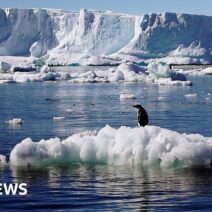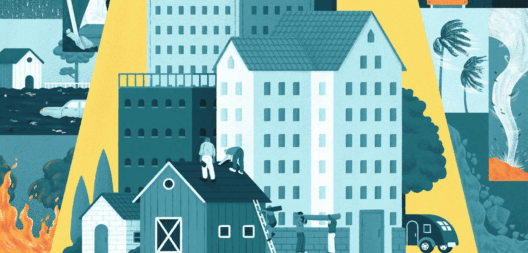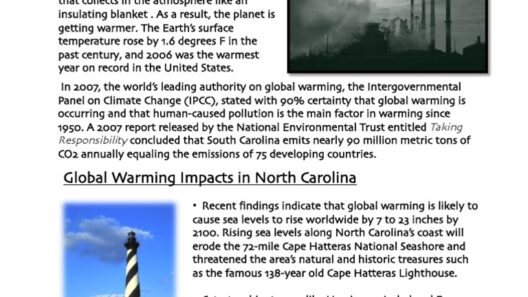The phenomenon of global warming, an imperceptible yet undeniable specter looming over our planet, has initiated critical discourse within scientific communities, policy-making circles, and everyday households. Amid these discussions, a curious metaphor often arises: “the cow in the room.” This phrase artfully captures the inconspicuous yet significant elephant—rather, cow—that grazes silently in the backdrop of climate discourse. While often overlooked, livestock, particularly cattle, play an instrumental role in exacerbating global warming. Their contributions are multifaceted, intertwining a complex web of agricultural practices, methane emissions, and resource-intensive demands that warrant urgent scrutiny.
Livestock farming, particularly cattle ranching, is responsible for a substantial portion of greenhouse gas emissions. Cows are uniquely capable of producing methane—a gas more potent than carbon dioxide in terms of its heat-trapping ability. Methane, released primarily through enteric fermentation during digestion and manure management, has approximately twenty-five times the global warming potential of CO2 over a century. It is here, within these ruminative ruminants, that a significant share of our climate woes can be traced. The staggering statistics are indicative; in fact, livestock contributes about fourteen and a half percent of greenhouse gas emissions globally, a figure that rivals emissions from the entire transportation sector combined.
The agricultural practices associated with livestock farming exacerbate this issue further. Pasture-based systems, though sometimes touted for their environmental benefits, can also foster land degradation, soil erosion, and deforestation when improperly managed. The quest for grazing land has prompted deforestation in vital ecosystems like the Amazon Rainforest, releasing the carbon stored within those trees back into the atmosphere and disrupting the delicate balance of biodiversity. This relationship is symbiotic; as we clear land to accommodate cattle, we inadvertently heighten the climate crisis while compromising ecosystems that serve as Earth’s lungs.
Moreover, the water footprint of livestock—particularly cattle—is prodigious. It takes approximately 1,800 gallons of water to produce just one pound of beef. This staggering statistic highlights the inefficiencies within our agricultural systems, raising questions about sustainability as water scarcity becomes an increasingly pressing concern worldwide. With populations rising and climate patterns shifting, the demand for water will only intensify, thereby crystallizing the urgent need for more sustainable meat production practices.
Transitioning to alternative agricultural practices could serve as a formidable solution in ameliorating the environmental toll exerted by livestock farming. Regenerative agriculture, which emphasizes holistic land management techniques, has gained traction as a viable approach. By fostering soil health, enhancing biodiversity, and sequestering carbon through rotational grazing and cover cropping strategies, we can begin to mitigate some of the deleterious effects currently attributed to traditional farming methods. Here lies an opportunity to reconcile our food systems with the ecological cycles that sustain them, offering a path forward for both human health and environmental integrity.
The role of consumer choices cannot be understated. Changing diets can create ripples that extend beyond individual plates, influencing entire food systems. A shift toward plant-based diets or reducing meat consumption can lead to significant declines in livestock-related emissions. In recent years, advocacy for reduced meat consumption has gained momentum, championing the benefits of flowering fruits, verdant vegetables, and wholesome grains. These alternatives not only help lower our carbon footprint but also promote better health outcomes, creating a win-win scenario for consumers and the planet.
Furthermore, the livestock industry’s industrialization has further compounded the issue, as factory farming techniques prioritize short-term gains over long-term sustainability. The concentration of animals in confined spaces has led to a surge in antibiotic resistance and heightened risks related to animal welfare. Such systems create a cascade of challenges—from health risks to environmental degradation—making it increasingly difficult to advocate for humane and ecologically sound practices.
The interconnectedness of climate change and livestock is underscored by the urgency of policy intervention. Legislative frameworks must evolve to address the complexities of livestock emissions. By incorporating carbon pricing mechanisms that hold the industry accountable for its environmental impact, there is potential to transform livestock farming into a more sustainable practice. Incentives for adopting regenerative agriculture practices, alongside education and outreach programs, can empower farmers to transition away from high-impact practices.
The climate crisis necessitates an unwavering commitment to reimagining our relationship with livestock. The “cow in the room” must no longer be a mere metaphor; it must stand as a clarion call for change, beckoning us to address the uncomfortable realities of our dietary choices and agricultural practices. As we stand at the precipice of possible catastrophe, the prospect of a collaborative effort between policymakers, scientists, farmers, and consumers emerges as both imperative and pivotal in mitigating the impact of livestock on global warming.
In conclusion, embracing a paradigm shift in our food systems, driven by innovative agricultural practices and conscientious consumer behavior, will not only address the pressing issues related to livestock and global warming but will also forge a sustainable pathway for future generations. It is time to heed the call and confront the reality of the cattle contributing to climate change, resolving to cultivate a world where ecological balance takes precedence over unsustainable growth.







